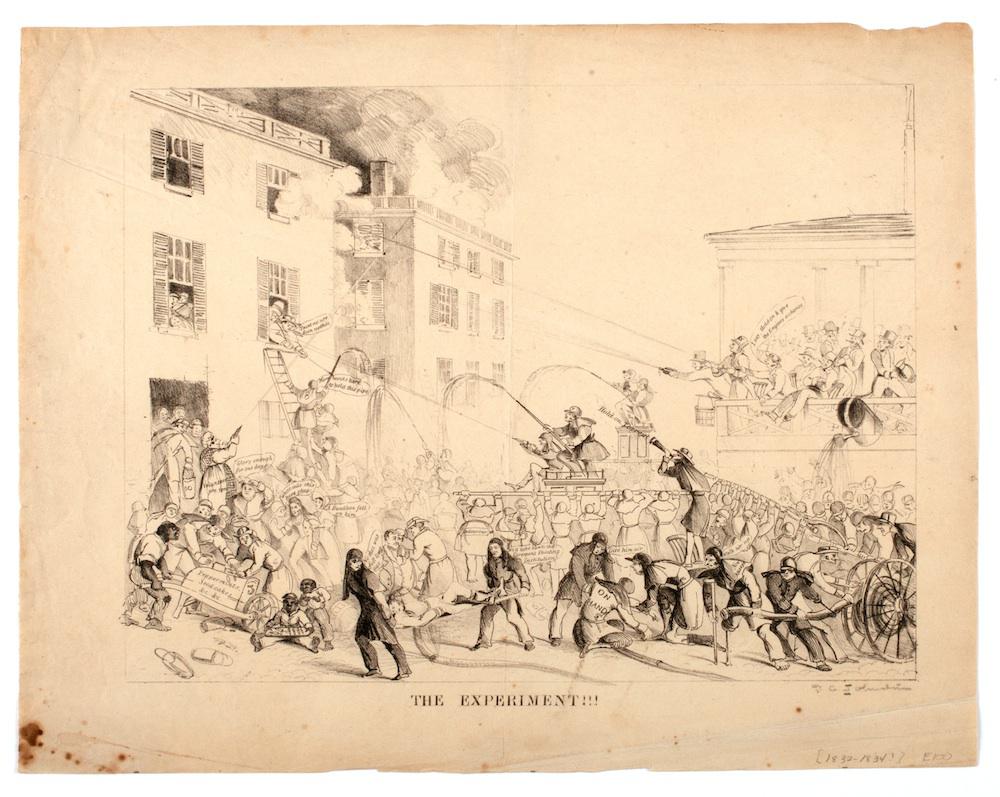The Vault is Slate’s history blog. Like us on Facebook, follow us on Twitter @slatevault, and find us on Tumblr. Find out more about what this space is all about here.
In 19th-century humorist David Claypoole Johnston’s cartoon “The Experiment,” a Boston crowd watches a building burn, as inept firefighters struggle to get water onto the blaze. Matthew Pearl’s story in the Atavist, “Company Eight,” describes the “experiment” the cartoon critiques: Boston’s 1837 move to professionalize firefighting, standardizing an endeavor that had been inefficient at best, and deadly at worst. As Johnston’s art shows, not everyone believed that this innovation would work.
Early–19th-century firefighting in the cities of the American Northeast was chaotic and ineffective, with companies—fraternal organizations operating on a volunteer basis—competing against each other to score access to fires. Conflagrations often got out of control as firefighters, enjoying the party atmosphere, got too drunk to respond effectively. Companies elaborately decorated their firehouses and marched in parades, but didn’t devote time to drill.
The protagonist of Pearl’s story, Willard Sears, was a reform-minded “temperance man” who experimented with a regimented, no-frills, dry fire company in the early 1830s. In 1837, Boston’s business class and landowners were desperate to find a better way, and finally agreed to pay a professional class of firefighters; Sears advised the city on the formation of the new companies. Eventually, Pearl writes, “the new Boston model would be followed in every city in the United States.”
Johnston’s cartoon, which Pearl dates to the year that the city decided to switch tactics, depicts a raucous scene of the same kind that took place under the old regime. Firefighters faint, onlookers heckle the engines’ efforts, and residents of the burning building despair.
Pearl points out that the cartoon contains several caricatures of black Bostonians in the lower left. This corner, he hypothesizes, reflects racist worries of the time that only black or Irish citizens would want to be professional firefighters—and that they’d be worse than ineffective. The wheelbarrow, marked with the insignia of Company 3, has been repurposed to sell “Peppermints, Seed Cakes, &c, &c.”
Click on the image below to reach a zoomable version.

Courtesy of the American Antiquarian Society.